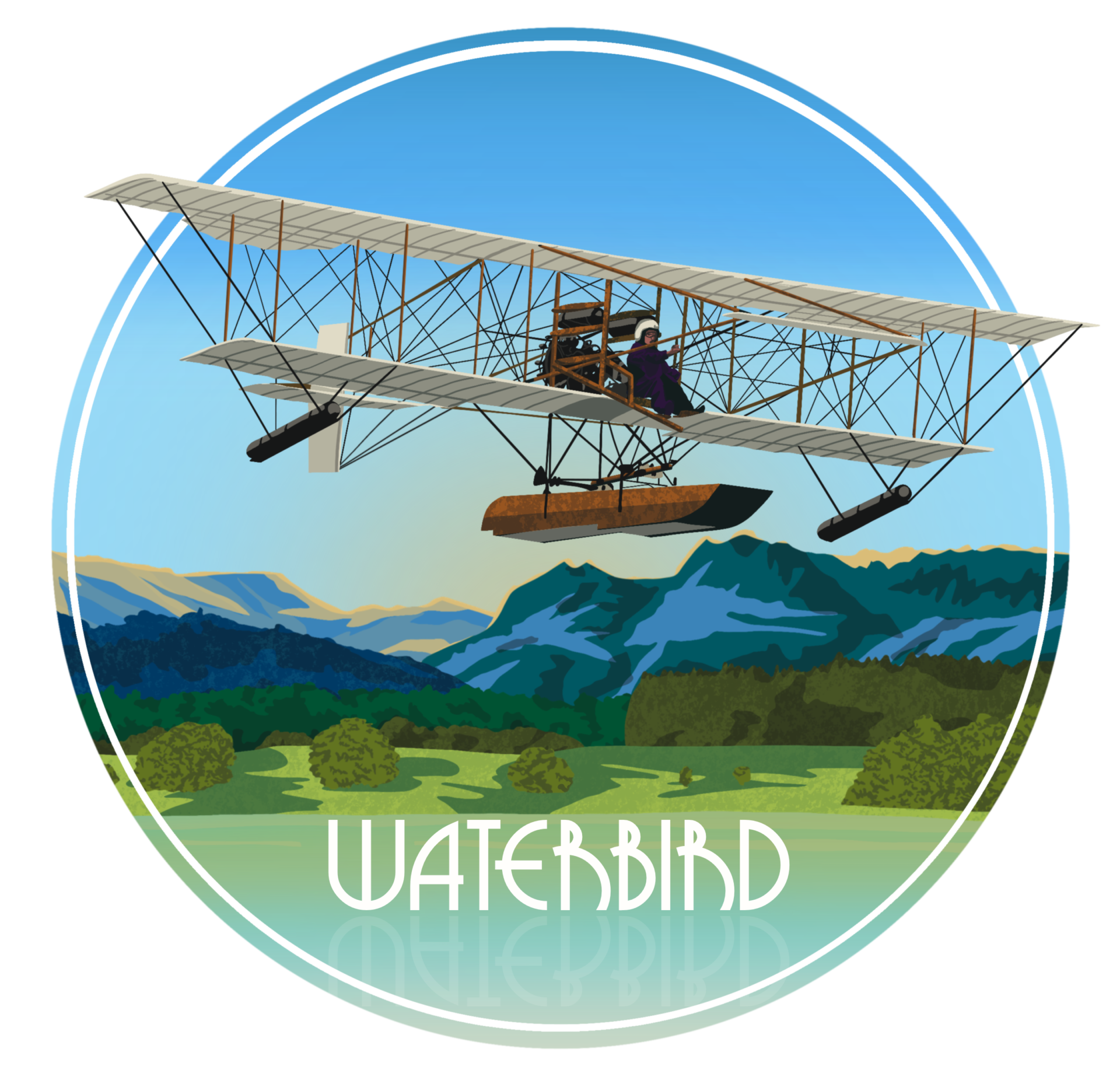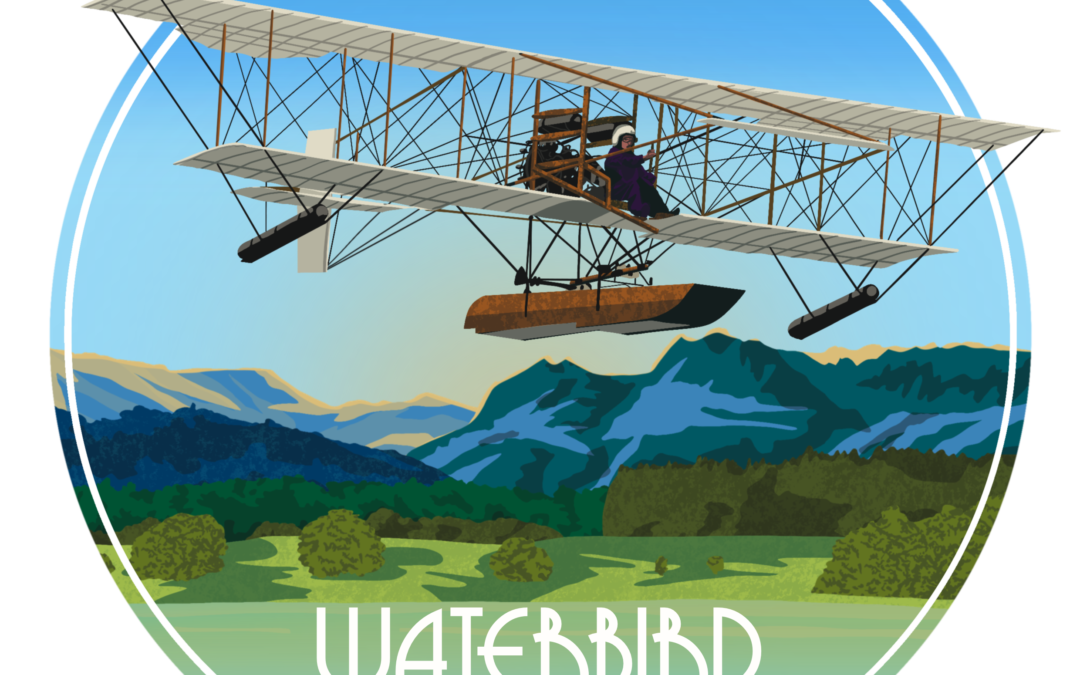The Air Accidents Investigation Branch (AAIB), which investigates civil aircraft accidents and serious incidents within the UK, its overseas territories and crown dependencies, is celebrating its centenary this year. As part of their celebrations, members of the AAIB are undertaking a relay cycle ride starting at Belfast on 11 June and finishing at Farnborough on 15 June. During their journey, the cyclists will visit 11 locations that reflect the development of aviation, of which Windermere is one.
On 25 November 1911, Waterbird took off from Windermere and safely alighted, becoming the first successful British hydro-aeroplane. It was the first such flight outside France and the USA. Waterbird was commissioned by Edward Wakefield, thrice mayor of Kendal, Army officer, barrister and landowner. He had attended an aviation meeting at Blackpool in 1909, and, at a time when nobody in the world had successfully flown from water, concluded that the best solution to reducing the risks of flying accidents was an aeroplane capable of operating from water. His ideas were ridiculed by the experts present, but after two years of almost constant experiment he succeeded at Windermere; a wonderful example of success against the odds.
There was considerable opposition to flying at Windermere, led by Beatrix Potter and Canon Hardwicke Rawnsley, a founder of the National Trust. A national campaign was launched. Windermere U.D.C. applied for an order under the Aerial Navigation Act 1911 to prohibit aircraft over the lake. There was a public inquiry at Windermere in 1912.
On 28 February 1912, the Standing Sub-Committee of the Committee of Imperial Defence, which included Winston Churchill who was First Lord of the Admiralty and Louis Mountbatten who was Second Sea Lord, approved the Technical Sub-Committee’s Report whose remit included future developments for naval and military aviation. On 14 March 1912, Wakefield entered into a contract with the Admiralty for his float and its method of attachment and to convert an Admiralty aeroplane into a hydro-aeroplane. However, Wakefield’s hands were tied in relation to the protesters in that he had signed the Official Secrets Act.
10,000 signatures were obtained by the protesters. Deputations were made to the House of Commons and the entire issue came to a head on 16 April 1912 when a question was tabled. Click here for image. The determining answer was given by Winston Churchill, who confirmed that hydro-aeroplane tests would continue at Windermere.
In 1913, Winston Churchill coined the term ‘seaplane’.
On Saturday 13 June at 07.00, the AAIB cyclists will depart from the Glebe at Bowness, where the Windermere and Bowness Civic Society erected a Waterbird memorial plaque. In recognition of Wakefield’s pioneering contribution to aviation safety, the cyclists will present a pennant to the Lakes Flying Company (LFC). LFC will present the cyclists with a signed print of a painting of Waterbird in flight.
LFC’s Ian Gee stated “We wish the AAIB well on their cycle ride. I have twice visited the AAIB at Farnborough and have the greatest admiration for their work.
“For example, at Windermere on 5 June 1915, the Avro Duigan/ Seabird seaplane crashed tail first into the lake and was wrecked. The cause of the accident was a stall at 300 feet because the pilot, Ronald Buck, was unaware that new floats had moved the centre of gravity. He was uninjured, and was convinced that had the accident occurred over land, he would have been instantly killed. On each of 21 June and 23 June 1915, he made two flights at Farnborough with Frederick Raynham. In 1911, Raynham had flown Waterbird at Brooklands whilst it was being tested as a landplane.”
The AAIB’s Chief Inspector, Keith Conradi, said “The AAIB are happy to highlight aviation events, such as those that took place at Windermere, to bring into focus the significant advancements in aviation safety that have taken place since the pioneering days of aviation in the early 20th century”.
Notes:
For detail about the plaque:
http://www.civicvoice.org.uk/society/windermere-and-bowness-civic-society/custom/3/
For detail about the history of aviation at Windermere 1909 – 1919:

